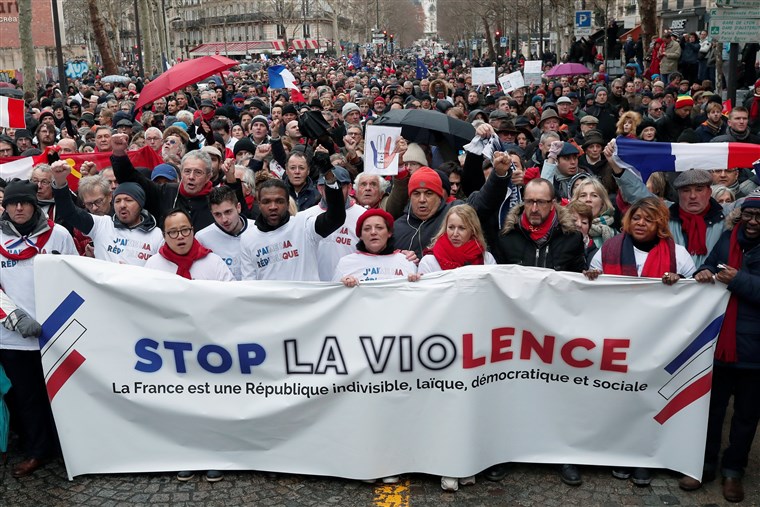The centrist ‘red scarf’ movement against the ‘yellow vest’ violence in France should be an eye-opener to the world as such. The movement, the brainchild of an engineer from Toulouse, had the backing of more number of people than the yellow vests when it took out a rally Sunday. This was a segment of people that said they were not against the demands of yellow vests for greater help to the poor in France, but were sick of the clashes and destruction their protests have resulted in. Such a movement is vital in the Indian context, too, where the public is habituated to destruction of public property at the most trivial of issues. Government vehicles are often targets of public ire and these vital resources are destroyed at the flimsiest of excuses. And there have also been allegations in some cases that the authorities themselves intentionally place public property in the way of protesters to ensure that they are damaged. Perhaps they find it a shortcut to get replacements for run-down equipment and material. However, it is always the tax paying people, who have nothing to do with such protests, who are bearing the costs. And violent protests have led nowhere in getting even the just causes of the agitators addressed. The primary reason why such protests have gained traction is that they continue to draw attention of the media and demands get space in public discourse which they are otherwise denied. The solution lies perhaps in creating popular support for demands through means that new technology and new media have given. Disruption is definitely a good way to get attention but it need not be done by damaging property. In India, it is not limited to tangible property damages alone. A Rail Roko or National Highway blockade could cause damages in millions, which they normally do. If aggression had been the last resort of protesters after repeated failures in making demands heard, today it is the first. Quick fixes are sought on matters that need lasting solutions. In getting authorities to find stop-gap arrangements, protesters may find temporary solutions to their problems but they will also set off events that derail progress elsewhere and the potential for dissent elsewhere. The nation has, in many ways, built a negatively stout image of aggressiveness, associating it with righteous masculinity. Revolutionary leaders and martyrs have been deified and their sacrifices made templates for agitations all and sundry, even where they are not justified. It would be a Utopian idea, though, to believe that all protests could be entirely peaceful. Violence has become the currency because it has been found effective in attracting the attention of the authorities concerned. The fear of violence pushes the authorities to take action that they might otherwise take at their own sweet pace to do or not at all. However, violent agitations today are failing to achieve their ends because they are short-term actions that focus energies ineffectively. Pressure is being created for a brief period to achieve little. The focus today needs to be on sustaining pressure through means that do not affect persons or organisations that are in no way connected with the fulfilling of a demand. The pressure need not receive public attention. The need is to get results without compromising resources. Leaders of agitations need to now look for alternative means to create pressure on authorities to take action rather than disrupting lives and damaging properties of uninvolved innocent citizens. Violence can never be the answer.
Not the answer

- Categories: Edit
- Tags: editorialORISSA POSTRed Scarf
Related Content
Bihar Show
By
Post News Network
November 17, 2025
Downward Drift
By
Post News Network
November 16, 2025
Power Play
By
Post News Network
November 15, 2025
Hear Indigenous Voices
By
Post News Network
November 14, 2025
Aid In Freefall
By
Post News Network
November 14, 2025
COP 30 Under A Cloud
By
Post News Network
November 12, 2025